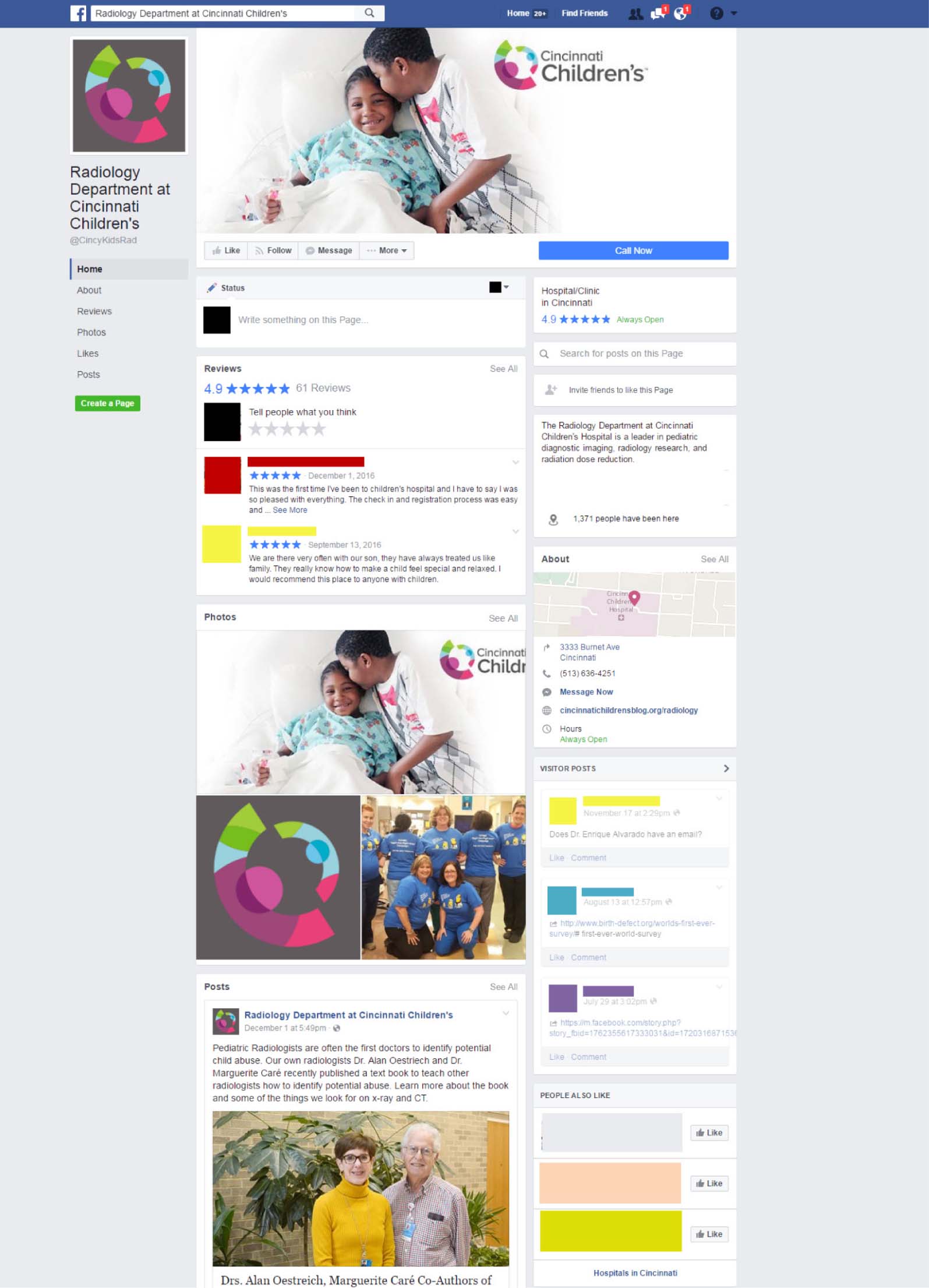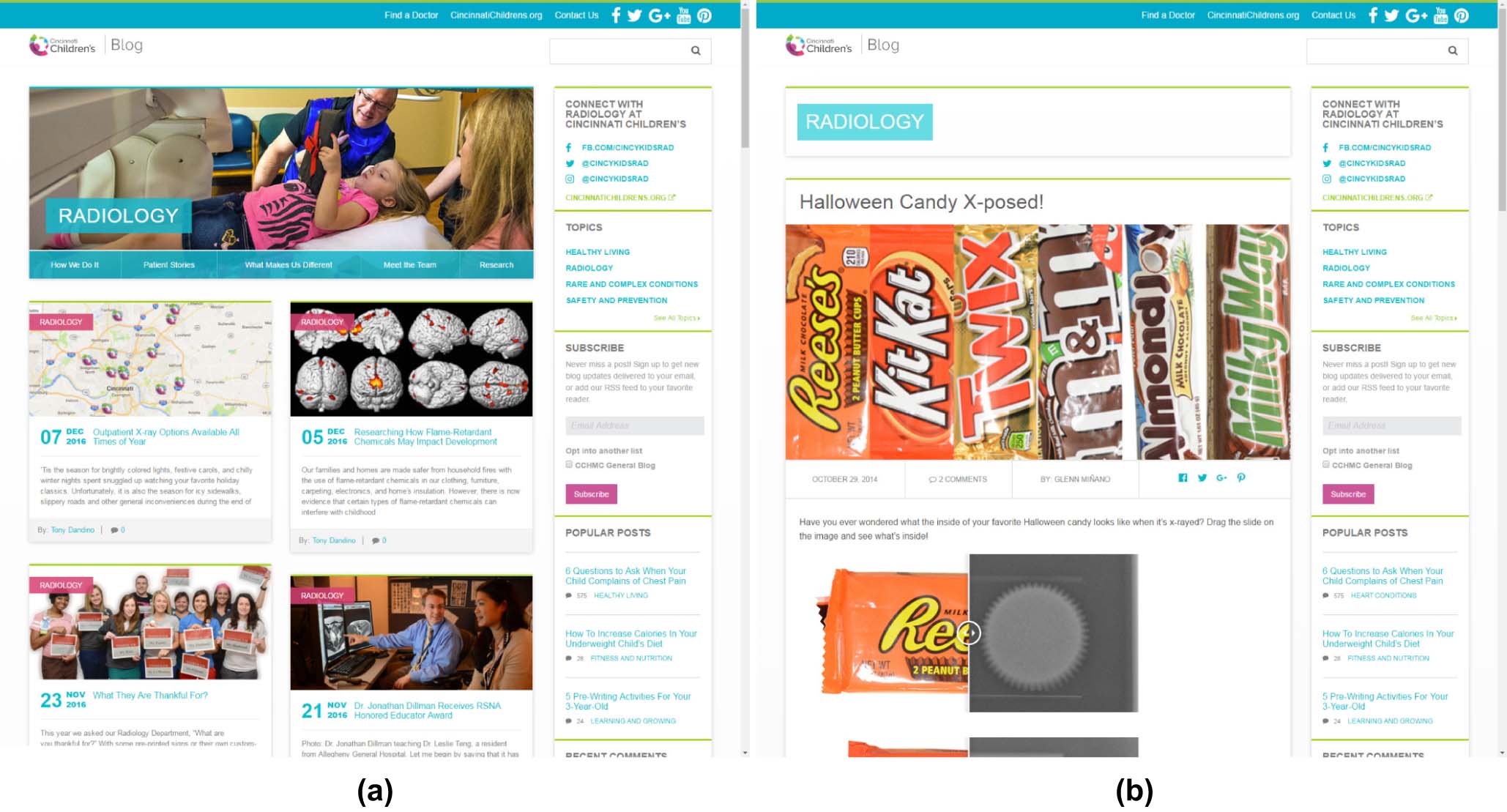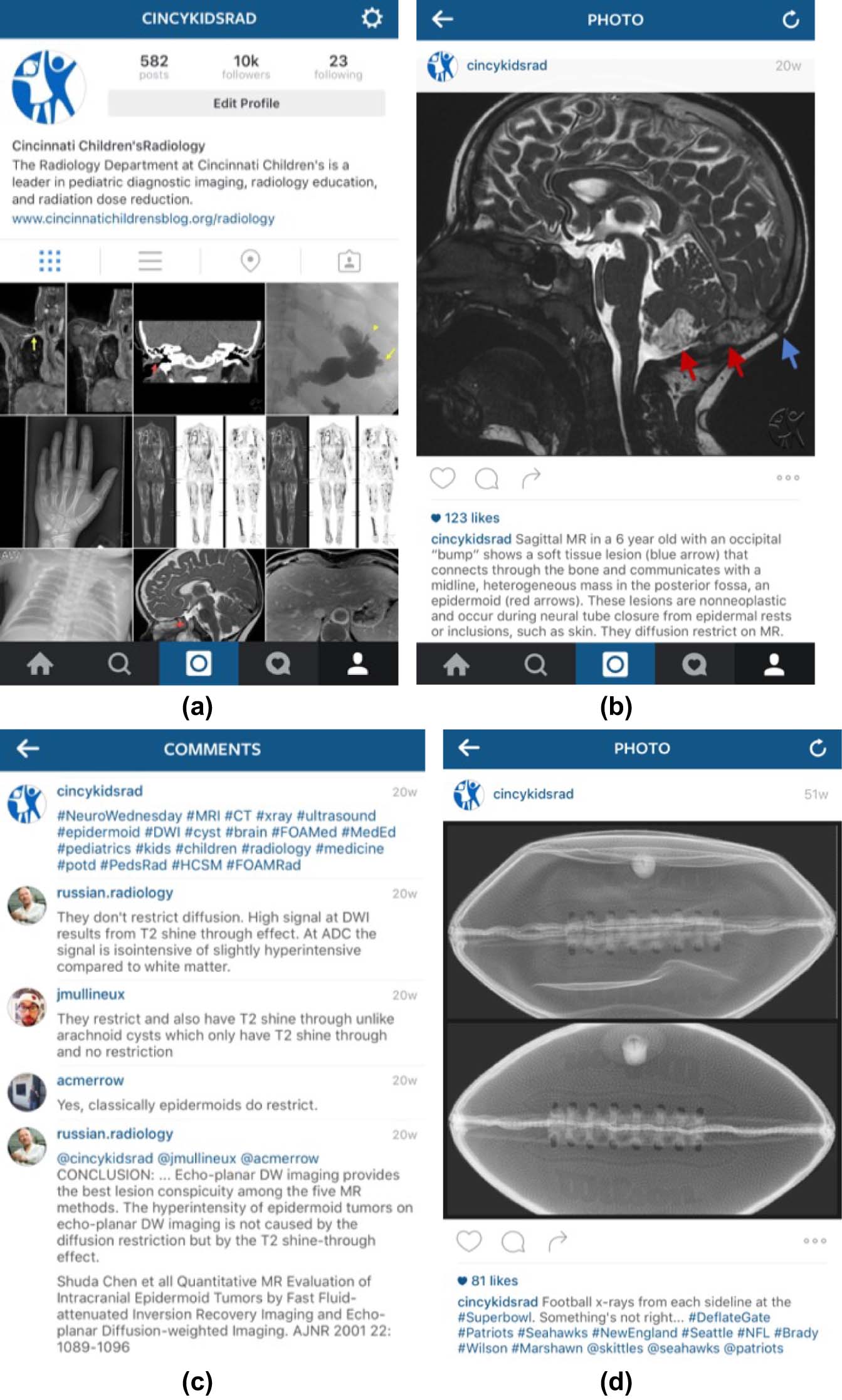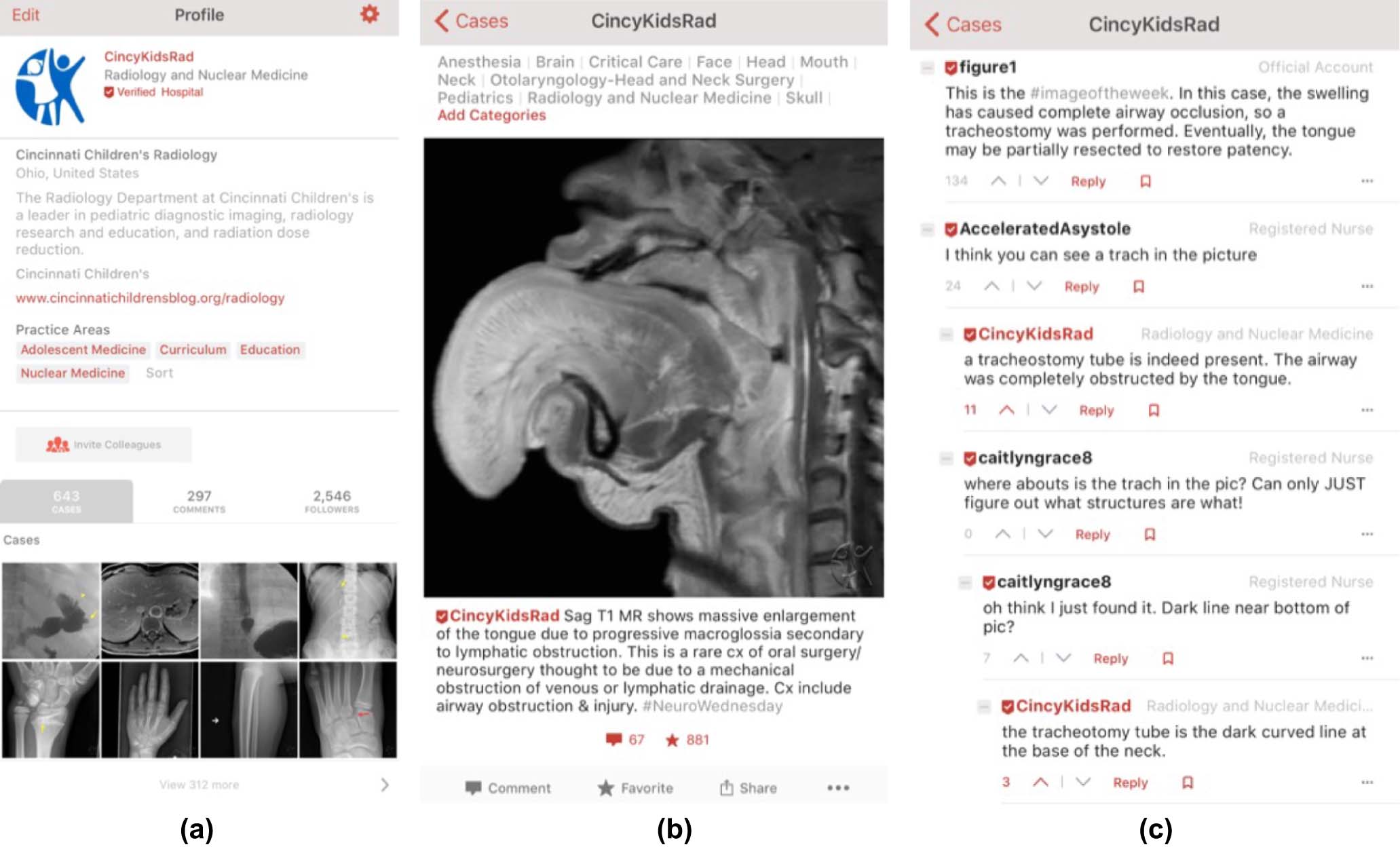The emergence of social media has provided medical practices with a new means of delivering content to a wide and varied audience. There are a number of different social media channels; however, each allows users to interact with each other, sharing and consuming content in a manner governed by rules unique to the specific social media platform. In this paper, we will introduce several common platforms, describe the advantages and disadvantages of each, and discuss how we have used each platform to connect to a target audience, highlight our department’s educational content, and showcase our research.
Introduction
Historically, marketing in medicine has taken one of two forms: mass marketing or academic marketing. Mass marketing is a relatively new phenomenon in medicine and has focused on traditional methods such as billboards, print advertisements, and television commercials. Although the term “academic marketing” is a crass way of describing the academic output of an individual researcher or department, there is no denying that publications, abstracts, presentations, and posters all serve to promote the researchers, the research topic, and even the department in which the research was performed. The emergence of social media provides a new platform for delivery of content to a wide and varied audience.
Social media is a method of digital communication whereby users interact with each other, sharing and consuming content in a manner governed by rules unique to the individual social media platform. Social media has become a required mode of communication for most businesses in today’s world due to its ability to deliver content directly to consumers, its massive user base, its relatively low cost for start-up and maintenance, and its ability for businesses to receive unfiltered feedback directly from the consumer. Whereas the general public and businesses have embraced social media, the medical profession has largely ignored this mode of communication . In this article, we explore our department’s use of social media for promotion, education, and patient/collegial interaction.
Decision to Participate
Before launching any social media campaign, it is important to understand your organization’s policy on social media. In many cases, employers prohibit the use of social media or require approval from legal counsel or marketing and communication.
There are a number of reasons why organizations choose to limit the number of groups participating in social media. First, many organizations prefer a focused message to the consumer; if multiple groups are each promoting their own agenda, it may confuse the consumer and dilute the organization’s message. Second, if multiple groups are using social media, there is an increased risk for a public miscue. Many organizations have had to make public apologies after inappropriate content has been posted on one of their social media channels . Finally, to stay relevant, content must be updated regularly on all social media channels. Many organizations are fearful of orphaned accounts that either serve as a reminder that a group has become stale or pose a risk in that hackers could take over and deliver unwanted content .
Even with these risks, we believe that there is value in having a unique social media account for a department. This is particularly important in radiology as most radiology practices do not have a direct relationship with their patients. Social media allows the department to interact with current patients and can help to show potential patients how the department differs from other practices. In a field that is becoming more and more commoditized, practices must show how they are different and potentially better than their competitors.
Get Radiology Tree app to read full this article<
Get Radiology Tree app to read full this article<
Get Radiology Tree app to read full this article<
Get Radiology Tree app to read full this article<
Get Radiology Tree app to read full this article<
Get Radiology Tree app to read full this article<
Get Radiology Tree app to read full this article<
Get Radiology Tree app to read full this article<
Get Radiology Tree app to read full this article<
Get Radiology Tree app to read full this article<
Get Radiology Tree app to read full this article<
Get Radiology Tree app to read full this article<
Get Radiology Tree app to read full this article<
Get Radiology Tree app to read full this article<
Get Radiology Tree app to read full this article<
Blog
Get Radiology Tree app to read full this article<
Get Radiology Tree app to read full this article<
Get Radiology Tree app to read full this article<
Get Radiology Tree app to read full this article<
Get Radiology Tree app to read full this article<
Get Radiology Tree app to read full this article<
Get Radiology Tree app to read full this article<
Get Radiology Tree app to read full this article<
Get Radiology Tree app to read full this article<
Get Radiology Tree app to read full this article<
Get Radiology Tree app to read full this article<
Get Radiology Tree app to read full this article<
Get Radiology Tree app to read full this article<
Get Radiology Tree app to read full this article<
Figure 1
Get Radiology Tree app to read full this article<
Get Radiology Tree app to read full this article<
Get Radiology Tree app to read full this article<
Get Radiology Tree app to read full this article<
Get Radiology Tree app to read full this article<
Get Radiology Tree app to read full this article<
Get Radiology Tree app to read full this article<
Conclusion
Get Radiology Tree app to read full this article<
References
1. Glover M., Choy G., Boland G.W., et. al.: Radiology and social media: are private practice radiology groups more social than academic radiology departments?. J Am Coll Radiol 2015; 12: pp. 513-518.
2. Matta R., Doiron C., Leveridge M.: The dramatic increase in social media in urology. J Urol 2014; 192: pp. 494-498.
3. Griner D.: DiGiorno is really, really sorry about its tweet accidentally making light of domestic violence. Adweek; Available at: http://www.adweek.com/adfreak/digiorno-really-really-sorry-about-its-tweet-accidentally-making-light-domestic-violence-159998 Accessed January 26, 2016
4. Moss C.: US airways tweeted an extreme pornographic image and left it up for a long time. Business Insider; Available at: http://www.businessinsider.com/us-airways-pornographic-tweet-2014-4 Accessed January 26, 2016
5. Allen J.: University of Michigan football’s Facebook page hacked overnight. Mlive; Available at: http://www.mlive.com/news/ann-arbor/index.ssf/2015/08/university_of_michigan_footbal_3.html Accessed January 26, 2016
6. Twitter : About. Available at: https://about.twitter.com/company Accessed January 26, 2016
7. Hawkins C., Duszak R., Rawson J.: Social media in radiology: early trends in Twitter microblogging at radiology’s largest international meeting. J Am Coll Radiol 2014; 11: pp. 387-390.
8. Fitzgerald R., Radmanesh A.: Social media and research visibility. AJNR Am J Neuroradiol 2014; 36: pp. 637.
9. Twitter : Twitter Analytics. Available at: https://analytics.twitter.com Accessed January 26, 2016
10. Facebook : Company Info | Facebook Newsroom. Available at: http://newsroom.fb.com/company-info/ Accessed on January 26, 2015
11. Aleo C., Hark L., Leiby B., et. al.: Ophthalmic patients’ utilization of technology and social media: an assessment to improve quality of care. Telemed J E Health 2014; 20: pp. 887-892.
12. Cincinnati Children’s Blog : Radiology Archives—Cincinnati Children’s Blog. Available at: http://cincinnatichildrensblog.org/radiology Accessed January 26, 2016
13. Google.com : Google analytics—mobile, premium and free website analytics. Available at: www.google.com/analytics Accessed: January 26, 2016
14. Instagram.com : Instagram. Available at: http://instagram.com/press/ Accessed January 26, 2016
15. Mandviwalla M., Schuff D., Chacko M., et. al.: Is that all there is? Taking education to new levels in the social-media era. Change 2013; 45: pp. 51-58.
16. Bahner D., Adkins E., Patel N., et. al.: How we use social media to supplement a novel curriculum in medical education. Med Teach 2012; 34: pp. 439-444.
17. George D., Dreibelbis T., Aumiller B.: How we used two social media tools to enhance aspects of active learning during lectures. Med Teach 2013; 35: pp. 985-988.
18. Karimkhani C., Connett J., Boyers L., et. al.: Dermatology on Instagram. Dermatol Online J 2014; 20:
19. Glover M., Khalilzadeh O., Choy G., et. al.: Hospital evaluations by social media: a comparative analysis of Facebook ratings among performance outliers. J Gen Intern Med 2015; 30: pp. 1440-1446.




